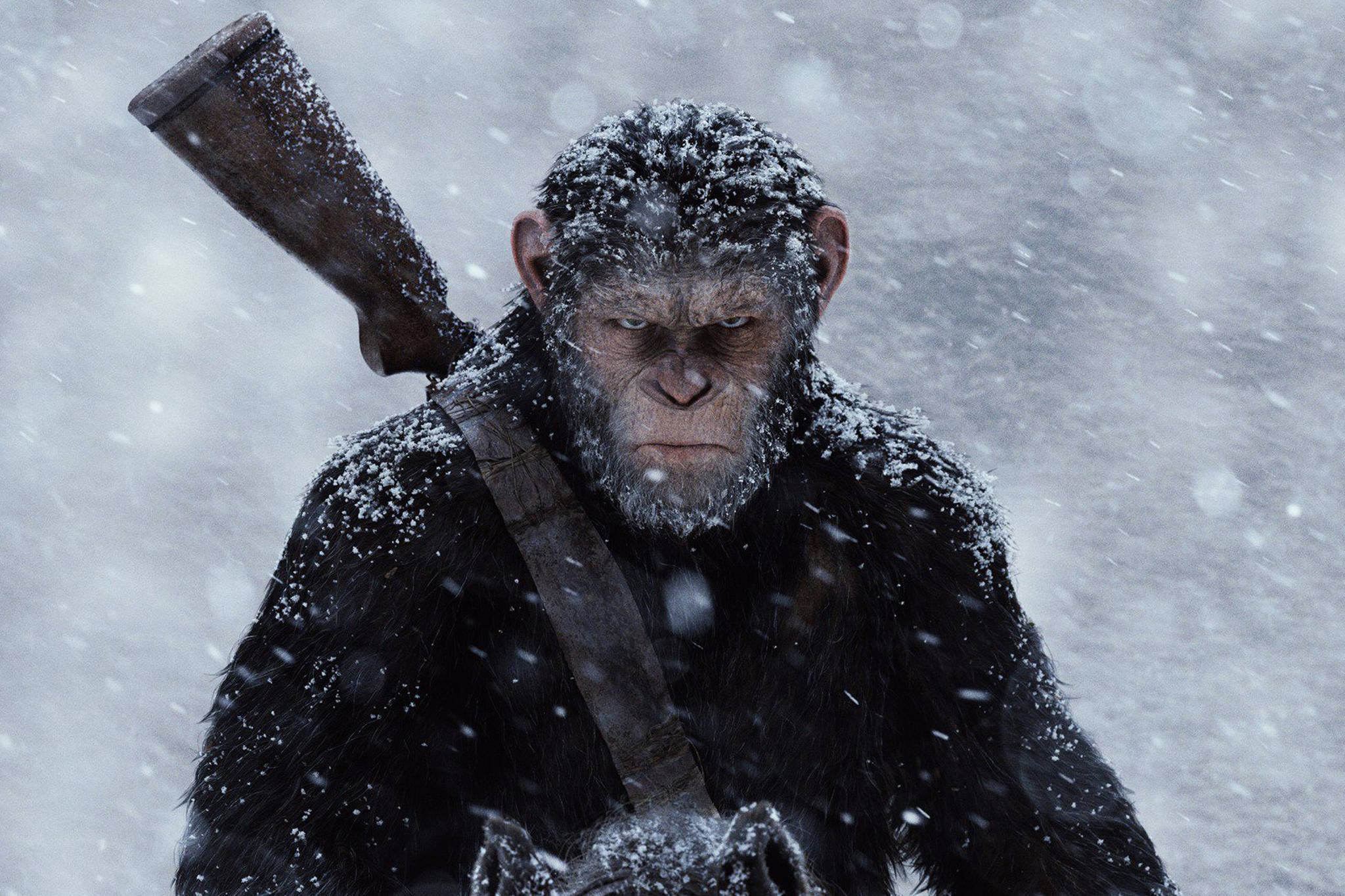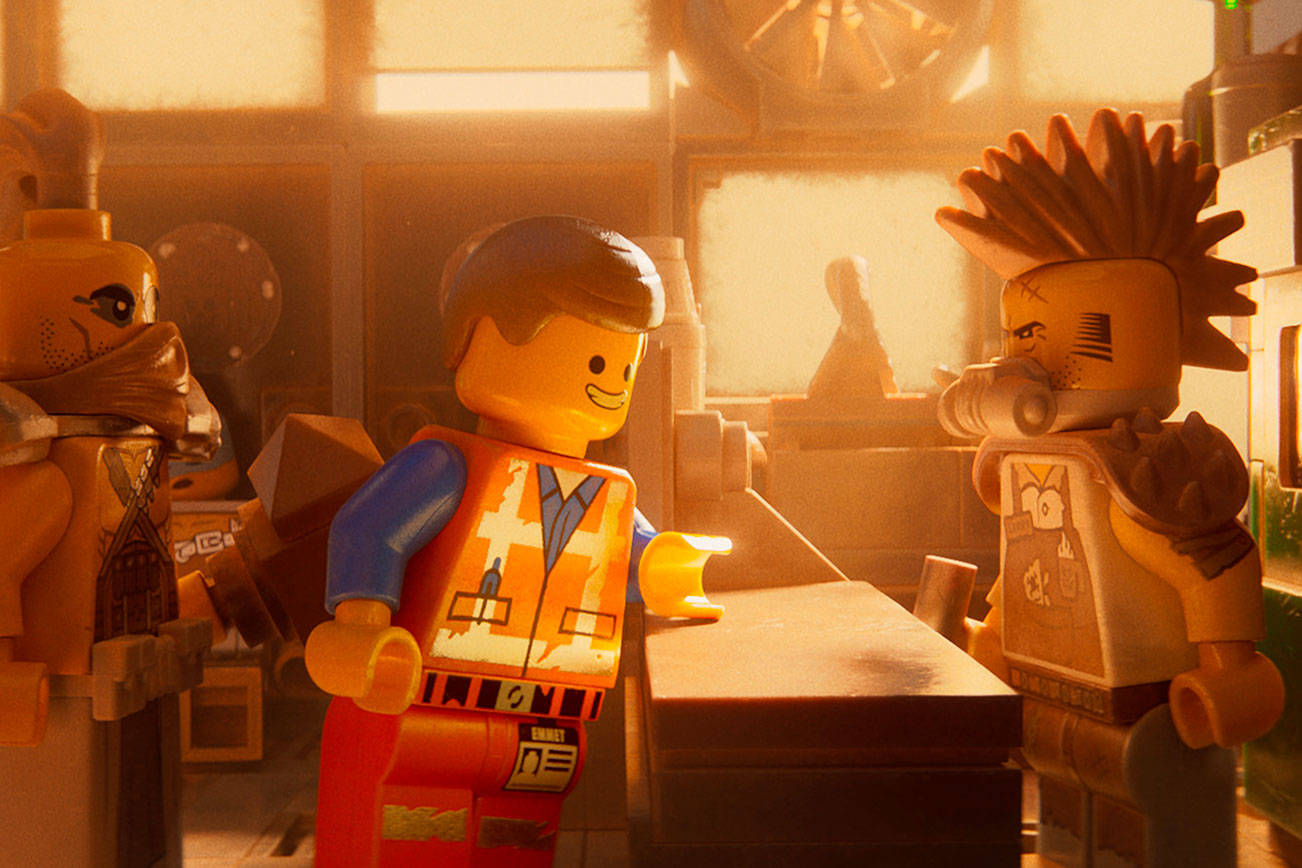Back when I could afford to attend big outdoor sporting events, I invariably got gooseflesh during the pregame al fresco performance of “The Star-Spangled Banner.” The Husky Marching Band does an especially bombs-bursting-in-air version. So maybe I’m a sucker for this kind of thing already, but I do think the deployment of the U.S. national anthem at a key moment in War for the Planet of the Apes constitutes one of the most truly spine-tingling moments of the movie year thus far. The gesture might sound pretentious—this is a sci-fi fantasy about monkeys, after all—but allegorical genre flicks have always thrived when told in big, broad strokes. Recall that the 1968 Chuck Heston Planet of the Apes, one of the greatest popcorn movies ever, tapped the Statue of Liberty for its trippy final image.
We are now three movies into the latest reboot of the Apes franchise, and finally in a groove. The first two films were uneven attempts to establish how exactly the apes took over the planet: a science experiment gone awry and man’s cruelty coming back to haunt him, basically. They took themselves awfully seriously, and so does War, to the extent that I felt like bursting into inappropriate laughter at a couple of moments. Still, director/co-writer Matt Reeves is probably right to play it straight. This movie is a stab at mythmaking—its main simian character is, explicitly, the Moses of his people—and its prehensile reach is large.
The national-anthem scene, for instance, is earned. At this point—a great plague having wiped out much of the Earth’s human population—the U.S. is reduced to a cruddy band of violent survivors. It requires no effort at all to root for the apes against these genocidal lunatics. The simian freedom fighters are led by Caesar (Andy Serkis), who is not only Moses in this scenario but also George Washington. The rather tired angle for this installment is that Caesar turns to the dark side in his vengeful quest against the human colonel (Woody Harrelson) responsible for war crimes. The only sliver of humor in this grim scenario comes from a former zoo monkey called Bad Ape (Steve Zahn, inimitably). This is a combat-mission film and a jailbreak movie, and if you can take the sight of digitally rendered chimpanzees and orangutans enacting Braveheart-style heroics, it succeeds on both counts.
I will confess I find it not always easy to accept the animated apes. For whatever reason, putting a mask on a human actor like Roddy McDowall in the original analog Apes movies bestowed a certain dignity. In these recent pictures, the drama is fine in close-up, but often looks faintly silly when we view the apes from a distance (when I see the troupe scampering into battle, I keep wondering where they carry their ammunition). Having said that, Caesar is a remarkable technical creation. We never actually see Andy Serkis, the Daniel Day-Lewis of motion-capture work, but Caesar is even more astonishing than his Gollum in the Lord of the Rings movies. Our first view of Caesar, glowering, is a thrilling moment in the annals of computer-generated expressiveness—but I still don’t know whether it’s Serkis or the animators doing it.
Buoyed by Michael Giacchino’s terrific music and rife with audacious references to Apocalypse Now, this film plays like a true pop opera, a Spielberg production of The Ring of the Nibelungs. Reeves, who did Dawn of the Planet of the Apes and Let Me In, is not a less-is-more kind of filmmaker—he flings visual ideas like monkeys throw feces, one after the other and in all directions. There are shots in this thing—like Caesar looking up from a waterfall hideout to see Homo sapiens outlined by moonlight at the edge of a cliff—that create real chills. The collapse of human civilization has rarely looked so dynamic, or so well-deserved. War for the Planet of the Apes, Rated PG-13. Opens Fri., July 14 at various theaters.
film@seattleweekly.com






